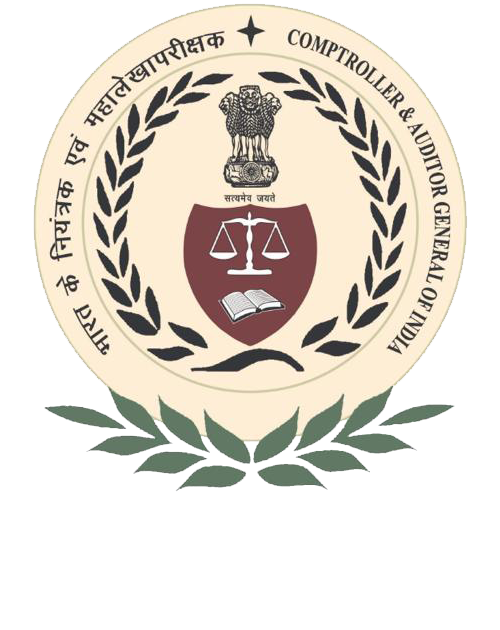Audit Reports

Railways
Report No.5 of 2021 - Compliance Audit on Union Government (Railways) year ended March 2019
Overview
C&AG’s Compliance Audit Report on Union Government (Railways) presented in Parliament
Audit Report No 5 of 2021 ‘Union Government (Railways) – Compliance Audit’ was laid on the table of Rajya Sabha on 11 August 2021 and in Lok Sabha on 29 November 2021 and has now become a public document.
The Audit Report consists of audit findings relating to compliance issues in respect of the Ministry of Railways and its various field units. The Audit Report includes three thematic audit paragraphs and 23 individual Paragraphs. The audit findings are related to deficiencies/irregularities noticed during the course of audit over Indian Railways during the year 2018-19. Significant audit findings of the Audit Report are briefly given below:
Deficiencies in provision of Elephant Passages in Indian Railways. A Committee of senior officials of Ministry of Railways and Ministry of Environment and Forests (Government of India, Government of West Bengal and Government of Odisha) was constituted in January 2013 to evolve an action plan for eliminating instances of elephant mortalities due to train hits. The Committee recommended short-term and long-term measures to prevent train-elephant collisions. Although steps were taken by both the Railways and the Forest Department, elephants continued to die on track. During 2016-17 to 2018-19, train collision resulted in death of 61 elephants. Audit observed that precautionary measures like speed restriction were not being enforced in the notified elephant passages. Audit analysis of identified passages and elephant deaths on track revealed that more number of elephant casualties was reported in those locations which were identified as elephant passages. Thirty-seven deaths occurred in the identified passages and 24 deaths occurred in the un-identified passages. Audit observed that the Forest Department and Railways had not given priority to construction of underpass/ overpass across railway tracks which facilitate elephant movement. There was no uniformity in dimension, height, colour and content of the elephant signage boards in Indian Railways. They were also placed in incorrect position defeating their purpose of forewarning the drivers. Honey bee sound devices were not installed in some of the Zonal Railways.
(Paragraph 2.1)
Price Variation Clause (PVC) was incorporated in General Conditions of Contract (GCC) to safeguard against change in prices of labour, material, fuel and other components. Ministry of Railways issued various instructions from time to time in this regard. As per General Financial Rules, 2005 and 2017 (GFR), price variation was payable only in long term contracts where delivery period extends beyond 18 months. However, PVC as per rules/provisions of GFR was not included in GCC for works contracts by Ministry of Railways. Audit reviewed 1050 works contracts (pertaining to period 2016-17 to 2018-19) and observed that PVC was included in contravention to the GFR provisions in GCC for contracts which were less than 18 months period leading to avoidable payment of ` 913.03 crore in 811 contracts. It was also observed that incorrect adoption of ‘base month’ for payment of PVC led to excess payment of ` 20.26 crore in 93 contracts and short payment of `4.31 crore in 35 contracts.
In most of the works contracts, time extensions were granted due to administrative failure on the part of Railways. As a result, Railway Administration had to make an avoidable payment of `187.51 crore to the contractors towards price variation in 514 contracts. Monitoring mechanism for checking of price variation bills was deficient. Due diligence was not exercised by the Executive and Accounts Department. Audit observed cases of fraudulent payment of price variation to contractors in Northeast Frontier Railway due to failure in internal checks.
(Paragraph 3.1)
South East Central Railway awarded the work of construction of a bridge (Bridge No 182) between IB and Brajrajnagar stations based on its own geotechnical investigations. During execution, the contractor found that actual soil conditions were not the same as was reported in the Railway’s report. Adverse soil condition prevented the contractor from completing the work. A new contractor was awarded the work with a change of design and location of the bridge. This led to wasteful expenditure of ` 6.73 crore incurred on the earlier incomplete bridge, which was later abandoned by the Railways.
(Paragraph 3.8)
Northern Railway constructed six (6) Limited Height Subways (LHSs), in lieu of Unmanned Level Crossings, on Rohtak-Panipat section of Delhi Division after incurring an expenditure of ` 16.19 crore. The whole expenditure incurred on construction of these LHSs became unproductive as these LHSs were completely submerged in water and remained unutilized. Thus, the main objectives for construction of LHSs in lieu of level crossings, i.e. to prevent loss of human lives and road accidents apart from better traffic movement, could not be achieved.
(Paragraph 3.2)
East Coast Railway delayed installation of “Integrated Security System” at four selected stations (Bhubaneswar, Puri, Cuttack stations of Khurda Road Division & Vishakhapatnam of Waltair Division) which posed a security risk. For better security to passengers and to guard the Railway Installations, Ministry of Railways issued instructions to all Zonal Railways to implement Integrated Security System (ISS). All the components of ISS were not installed and System Integration with control room as envisaged in the contract was not achieved in East Coast Railway. Railway Administration neither took any action against the defaulting firm nor reported the progress/difficulties in installation of ISS equipment to Ministry of Railways.
(Paragraph 2.2)
Despite reminders from State Authority, East Central Railway delayed payment of ` 3.20 crore for acquisition of land from State Authorities for construction of a new line between Hajipur and Sagauli. This resulted in avoidable additional expenditure of ` 134.21 crore due to revision in Land Acquisition Act and rates of compensation.
(Paragraph 3.3)
Download Audit Report
- Preface
- Index
- Abbreviations
- Overview
- Chapter 1 – Introduction
- Chapter 2 – Operations and Business Development
- Chapter 3 – Infrastructure
- Chapter 4 – Traction and Rolling Stock
- Annexure

